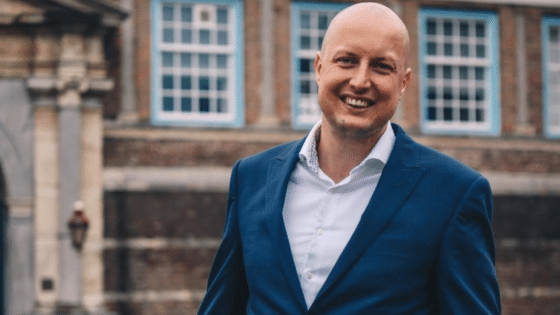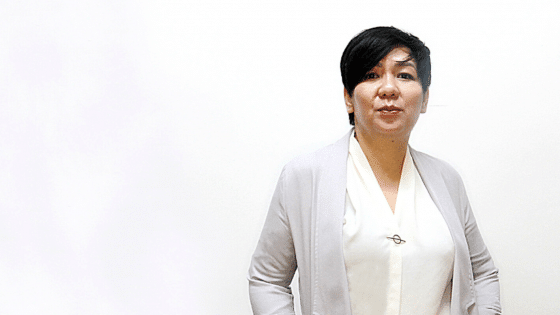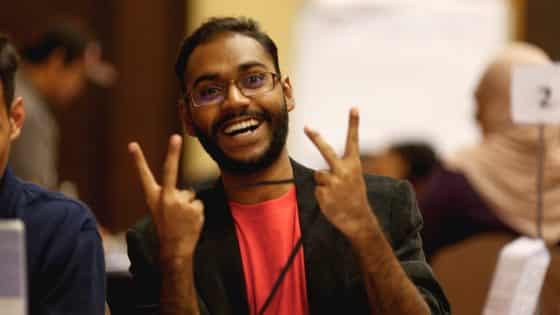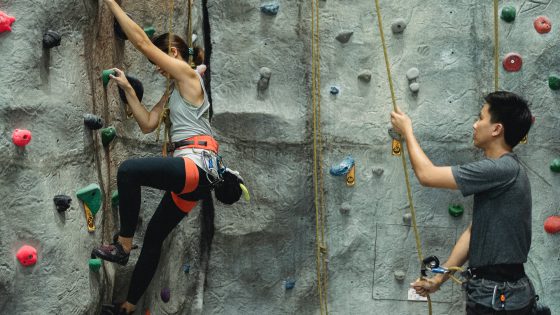In uncertain times like this, people need to develop resilience to be able to thrive and navigate the rising challenges in the workplace. This is beneficial not only to employees but also to organizations. And that is why leaders in organizations have a crucial role in building resilience or the ability to adapt to any situation and bounce back from adversities. On the first episode of my video podcast, Leading Great Workplaces with Coach Anda, I had an opportunity to interview an amazing resilience and executive coach, Luis Velasquez, who is also the founder and managing partner at Velas Coaching LLC.

Luis is a Harvard Business Review ascent contributor, Stanford University facilitator and an executive coach with years of experience working with leaders from different parts of the world.
Luis shares in this episode how to “bloom where you are planted” and how you can use keystone habits to build a strong work culture. He uses stories, rituals and mindset to embed the culture of the organization and build engagement.
In this interview, you will learn how Luis is able to help organizations identify and institutionalize their strengths. He also shares his tips on how leaders can convert these into action and practice. Luis also shares his story, including what has led him to resilience coaching and why it makes him an authentic coach.
What is the theme of your coaching?
So I consider myself a resilient individual. I’m a resilient human. And to me, resilience is about adapting. You know if you think about this, the goal of coaching sometimes is — you got to change. You got to change your behavior.
You got to change this or change that and the reality is the word change is very hard to assimilate. Yet everyone has the ability to take the first step. And that’s what resilience is — to take the first step. To adapt to where we’re at. To bloom where you’re planted. Let’s put it that way.
So if I would be able to synthesize my coaching in one sentence, it would be something along these lines: “In order for us to act differently, we need to think differently. In order for us to think differently we need to see differently.”
And that’s what I do. I help my clients and teams see a different perspective so they can start thinking differently about what is happening to them so they can start acting differently. That is basically the essence of resilience — doing things differently. Adapting. And bloom where we’re planted.
The other component to that is that there is a level of what I call, the difference between being resourceful and being a consumer of resources.
Resilience is about being resourceful. It’s working with what you have. It’s making the best of what you have at this moment. You know, as opposed to: when I have that, I’ll be better. You know, and that is now what resilience is. Resilience is to start where you are and where you are is the place that you need to be at this time.
So it’s starting with what we have and what we can control?
LV: Yes, absolutely. It’s about, you know, if you are at the bottom of a situation, that’s where you are. And that’s where you need to be. And that’s where you’re supposed to be so that everything now is from then on is getting better.
And resilience is about taking those small steps. Never discount the small steps. That’s what, at the end, has a compound effect. It has an additive effect.
The small steps will get you to where you want to go. —Luis Velasquez
That’s the essence of my coaching. That’s what I do with my leaders. I go with the perspective that everyone is perfect. But we all have the ability and the capability to get better.
How has that kind of philosophy or kind of thinking helped build great workplaces?
LV: I am currently coaching a team in Canada at this place. It’s a fantastic place to work, you know, they see, it’s one of those people who takes care of its people; they take care of each other, they help each other, they support each other, but what they needed to do is to figure out what makes them be as effective and as simply an amazing organization as they are working right now.
This company is a Japanese company and this team is in Canada. There is a team in Canada and there is one in the United States. They’re all over the world. This particular team is superb. They’re doing fantastic. So when I start working with them, we’re realizing what makes this team great.
And we defined their culture. We tried to figure out what makes this team great. And they realized that what they do, they have an incredible culture of support. They didn’t know that that’s what they’re doing.
I’m curious about that Luis, how did you make that come out?
LV: So we need a bunch of exercises but one very defined, you know what really good exercise that we did, is to define what are the three behaviors or four behaviors that are most important for them.
And since they started throwing out, oh we do this, we do that, and we will start thinking about it. Really how will you do that? What type of stories about those behaviors and then we come up with three behaviors and way back each other up. We actively listen to each other and are transparent.
You know those are the three behaviors that are many others, but now those are the three behaviors that now, they start framing the culture. These are the behaviors that we are expecting to be displayed. Not only in the leadership but everybody in the organization.
And along those lines the other component we started to see, okay those are the behaviors. How are we going to use those behaviors to embed that culture or support that you have?
And they come up with what I call the keystone habit and the keystone habit is the one behavior, is the one component where everybody does it, it will change it and influence everything.
The 3 Cs: Communicate, collaborate, celebrate
LV: So we start talking about that and now that they say, you know, what we need to do is to communicate, collaborate and celebrate, they call it the three Cs: Communicate, collaborate, and celebrate.
Great, so now those are the keystone habits for this organization. How are they going to do that? By showing up with the behaviors that we were talking about. We back each other up. We listen to each other. We’re transparent. We are a culture of support.
So all of those things are integrated and the point that I’m trying to make is that they were already doing that. What we need to do is to define all of those elements that they were already doing and now making it more intentional. Institutionalize those elements. If that’s the word.
Does institutionalizing and being intentional about recognizing their strengths make them think of more ways of making those things happen?
LV: To think about culture, the way I see it, there are people that are wanting to build a culture and others that are leaving the culture. In terms of doing the things that they said they want to do, they can’t, from a compliance perspective they’re doing the same thing.
But one is going to be like, Oh my god, I have to do this now. The other one is that they are leaving the culture. I know what it means to be done. I see this is important for us. So this company is doing fantastic work. You know, I mean they’re not doing anything different but now they’re being more intentional about embedding that culture.
What are some tips that you can give leaders on putting it into practice?
LV: So I think that the way we’re doing, we’re working with this company, you know my partner and I, we’re doing what we call embedding this culture and when we’re doing that, we’re doing several things.
#1: Create stories
LV: Number one is creating stories around these three behaviors. Stories that if somebody ask you about yourself, tell me about the culture in Canada, let me tell you, Oh this happened a few years ago like the example about the most, it was a fantastic example, we were going to have our second day of this particular workshop or this particular kickoff meeting on the day of the inauguration of the president of the United States. This company is in Canada but they had a few U.S. citizens that are working in the U.S.
So the CEO said, You know what? We need to support our colleagues in the U.S. Let’s move everything, because they want to enjoy this historical moment, the inauguration of the president.
Those are the stories that embed the culture, those are the stories that people look up and wow. So when they say for instance you know, tell me about the culture of San Ting Canada. Oh let me tell you a story. You know when we were doing next to YNC, the CEO stopped everything because he wanted to support the people in the US to go to the celebration. That’s how the culture gets embedded. That’s how people start looking at this culture and say, I want to work there.
#2: Rituals
LV: The other thing is about rituals. For instance, you know, when you start a meeting, what we do is back each other up, we listen to each other, and we’re transparent.
Now let’s get down to business. You say your intention right away. So the point is, the more we talk about the culture, the more it embeds. And it’s going to be backed up by behaviors, by the stories, by the rituals, and by the mindset.
#3: Mindset
LV: But the whole idea is that the great places to work is not about perks. It’s about how people feel about going to work every day. One way that we’re talking about this company is the way we do things around here.
So the way we do things here is we back each other up and actively listen to each other and we’re transparent. That’s the way we think around here. That’s how you embed the culture and that’s how people say, Wow, I want to work in that place.
If you are to pick one trait that makes a great leader to lead a great workplace, what would that trait be?
LV: If I were to answer that with one trait, that is a million-dollar question, I think that it is not necessarily one trait but I think that it is the ability to show up as your organization needs it. It’s how they show up. So if I were to put a name on that, it’s the ability to adapt. But to adapt for the purpose of service and helping each other out.
If you think about this, many leaders, I’ve seen this over and over again, is the fact that they were successful in one place and they come to a new place and they expect to have the same results, unaware that they are different people, they have a different culture, and I think the ability to adapt to a new environment but having also a purpose and the purpose is to serve, the purpose is to elevate.
There is a fantastic book called From Good to Great and Jim Collins talks about the level 5 leader. The level 5 leader is – imagine the most competent leader, level 5 is something additional, and the additional is the purpose of helping others and elevate others and serving others and that’s the key.
But I think that going back to your original question, leaders need to show what the team or the organization needs.
What brought you to resilience coaching?
LV: You know there is a lot of personal history behind it, and I think that Dorie Clark of the Recognized Expert course she’s a great person in terms of marketing or branding. Let’s put it that way. And one of the principles is that we all are experts of something. And there are three different ways of showing expertise.
Number one is you do the research. Picture a professor.
Number two, you write about it. You know, You interview people and you write about a specific subject and the other one is you live it. And we all have an expertise, we all have a experts on something and you know looking back at my life, where I came from, where I am right now, you know I grew up in a third world country, and I came to the United States on my own through a scholarship and I got a PhD, I became a professor, I got a brain tumor.
There is a lot of stuff that happened in my life and you know as a result of that I started trying to understand myself.
What resilience means to me: Commitment, persistence, optimismLV: How is it possible that I am always smiling and I am always positive with everything that I had going through? I realized that my superpower is resilience and this is what I do. And resilience to me are three things: Commitment, persistence, and optimism.

If you’re committed to something, you’re going to get it. But that is not enough. Persistence is when you actually go and do it regardless of how hard it is.
And optimism is to envision the possibilities. Once you envision the possibilities, you know it is easy to be committed and easy to be persistent. So that’s what I am about.
The way I came to resilience wasn’t research or writing about it. It’s actually living it and understanding myself — why is it that I am able to see things differently. It goes back to what I was telling you about my practice, you know from since I have memory, the way I cope with things is to see things differently. You know if you think about it I am at the bottom of the pit, the only thing I can do is how else I can see it.
As a coach, what I want to bring is authenticity. What I want to bring is also a willingness to partner with you. What I want to bring is the fact that I can see the possibilities. Can you see those possibilities for yourself?
Wrapping Up
I’m sure these insights from Luis Velasquez will help you create a more resilient team and build a culture that focuses on the strengths of every individual within your organization. Watch the full interview here: Building Resilient Leaders with Luis Velasquez.
About Leading Great Workplaces with Coach Anda
Leading Great Workplaces with Coach Anda is a series where I interview globally recognized leaders and fellow coaches on how to create a workplace where people can thrive.
Leading Through Uncertainty
Anda Goseco is a globally recognized Executive Coach who takes successful leaders to the next level of success by helping them uncover and master their blind spots. She focuses on team strategies that lead to high engagement and productivity. Anda coaches leaders from Fortune 500 companies and Top 100 corporations in the Philippines. As an Executive Coach, Anda asks tough questions — probing questions that might make leaders feel uncomfortable — but she balances it with humility, empathy and respect to make coaching a safe place and an empowering experience for leaders. You may contact her at info@coachanda.com. Follow her on LinkedIn.



















